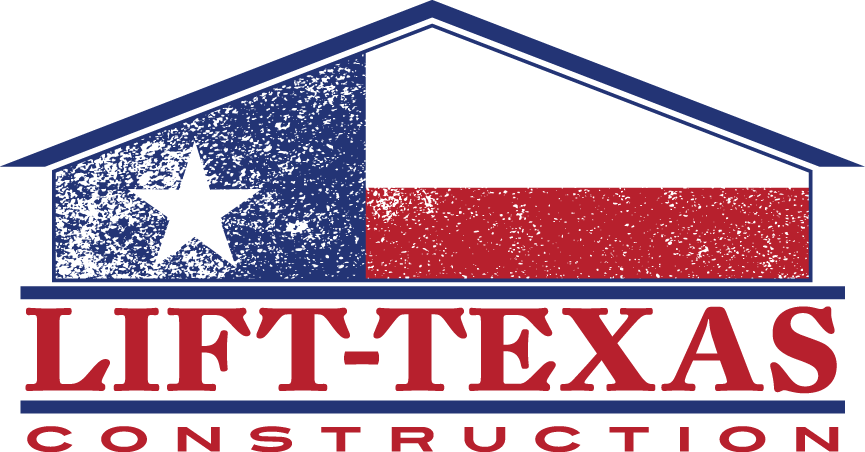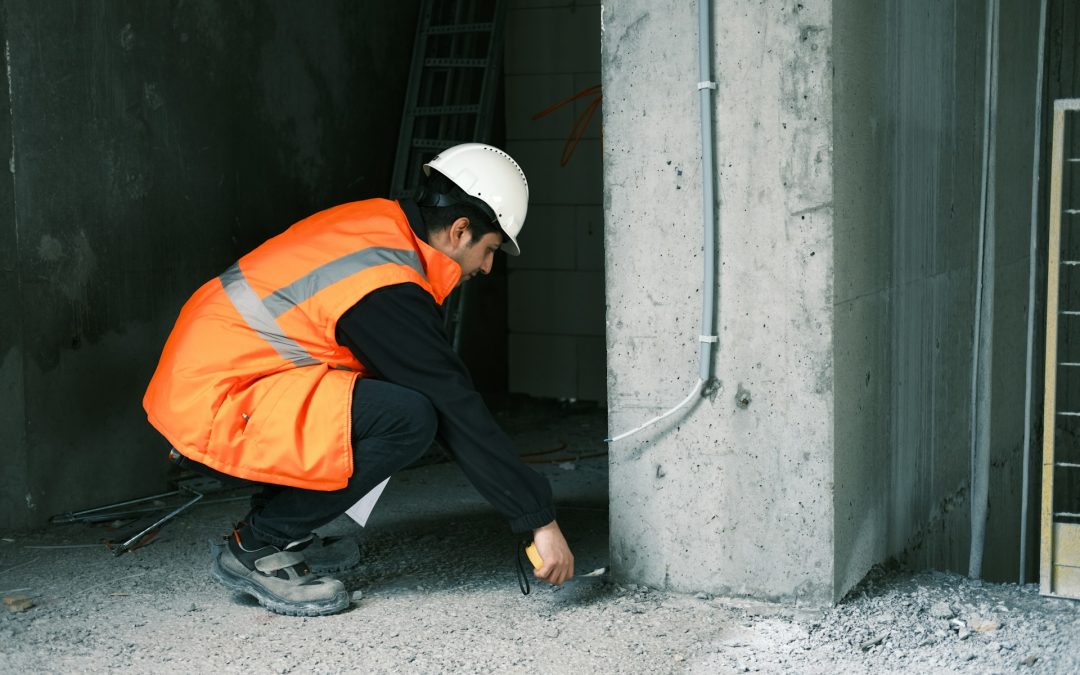Repairing the foundation of your home can be a daunting but necessary task. A solid foundation keeps your house stable and safe, so addressing any problems quickly is vital. However, it’s not just about fixing the issue; it’s also about making sure you stay safe while you do it.
Foundation repair involves heavy materials, deep excavations, and sometimes hazardous tools. These factors mean that working on your foundation can be risky if you aren’t careful. Knowing what you’re getting into and how to protect yourself can help you avoid accidents and get the job done right.
In this article, we’ll dive into the risks associated with foundation repair, the safety gear you need, and proven methods for staying safe. Our aim is to provide you with a comprehensive guide to ensure you can tackle foundation repair with confidence and care. Let’s get started by understanding the potential dangers you may face during the process.
Understanding the Risks of Foundation Repair
Repairing a home foundation can be dangerous if you don’t know the risks involved. Knowing the potential dangers can help you stay safe and avoid accidents.
1. Collapsing Soil: One major risk is the collapse of soil around the foundation. When you dig around the foundation, the soil can become unstable. This can cause the sides of the excavation to cave in, which can be extremely dangerous if you’re working in the area.
2. Heavy Lifting: Foundation repair often involves lifting and moving heavy materials. Concrete slabs, steel beams, and other components are not only heavy but can also be awkward to handle. Incorrect lifting techniques can lead to serious injuries like strains, sprains, and even fractures.
3. Tools and Equipment: Using the right tools is crucial, but these tools can also be hazardous if not handled properly. Power tools, jackhammers, and drills can cause serious injuries if they malfunction or if used incorrectly. Always familiarize yourself with the tools before starting the job.
4. Underground Hazards: There’s also the risk of hitting underground utilities such as gas lines, water pipes, and electrical conduits. Striking any of these can cause immediate danger, like gas leaks or electrical shocks.
5. Structural Instability: When you begin work on a foundation, the building may become unstable. This can cause walls or parts of the house to shift or collapse, which poses a significant risk to anyone working nearby.
Understanding these risks helps you to take the necessary precautions, ensuring that your foundation repair project goes smoothly and safely.
Essential Safety Gear for Foundation Repair
Using the right safety gear is crucial when working on foundation repairs. Proper equipment can prevent injuries and help you work more efficiently. Here’s a list of essential safety gear you should have:
1. Protective Clothing: Wear durable clothing that covers your arms and legs to protect against scrapes and cuts. Heavy-duty gloves are also important to protect your hands from sharp objects and rough surfaces.
2. Safety Helmets: A safety helmet protects your head from falling debris or accidental knocks in tight spaces. Always wear a helmet when working in areas where overhead hazards exist.
3. Safety Glasses: Safety glasses keep your eyes safe from dust, flying debris, and splinters, especially when using power tools or working with concrete mixers. Look for glasses that provide full coverage and are shatter-resistant.
4. Respiratory Protection: Dust masks or respirators are essential when you’re working in dusty conditions or with materials that can produce harmful dust. Make sure you use a mask that’s rated for the work you’re doing.
5. Ear Protection: Power tools and machinery can produce loud noises that can damage your hearing over time. Use ear plugs or noise-canceling headphones to protect your ears.
6. Steel-Toed Boots: Wear steel-toed boots to protect your feet from heavy objects and sharp debris. These boots provide additional support and stability, which is important when working on uneven or rough terrain.
7. Harness and Safety Ropes: If your work involves heights or deep excavations, use a safety harness and ropes. These can prevent falls and provide extra security while you work.
Having the proper safety gear can make a significant difference in preventing injuries and ensuring a successful repair job. Always check your equipment before use, and replace anything that’s worn out or damaged to maintain a safe working environment.
Safe Techniques for DIY Foundation Repair
Taking on a foundation repair project by yourself can be challenging, but there are safe techniques you can follow to get the job done right.
1. Identify the Problem Area: Before you start any repair, clearly identify where the problem lies. This can be cracks in the foundation, uneven floors, or sticking doors and windows. Knowing the exact issue helps you choose the right repair method.
2. Seal Small Cracks: For smaller cracks, use a concrete patching compound or epoxy. Clean the crack first to remove any debris, then apply the compound according to the instructions on the package. This can prevent water from getting into the crack and causing more damage.
3. Reinforce with Steel Piers: Installing steel piers can be a good solution for sinking foundations. Carefully dig holes around the perimeter of your foundation, insert the steel piers, and use hydraulic jacks to lift the foundation back to its original level. Make sure to follow safety guidelines to avoid any injury.
4. Use Carbon Fiber Straps: For vertical cracks or bowing walls, consider using carbon fiber straps. These straps can be adhered to the wall with epoxy, providing extra support and preventing further movement.
5. Maintain Good Drainage: Often, foundation problems worsen because of poor drainage. Install gutters and downspouts to direct water away from your home. Ensure the ground slopes away from the foundation to prevent water from pooling around it.
By following these techniques, you can tackle minor foundation repairs safely. However, always assess the severity of the problem and don’t hesitate to seek professional help if needed.
When to Call in the Professionals
It’s important to recognize when a foundation problem is beyond your DIY skills. Here are some signs that it’s time to call in the experts:
1. Large Cracks: If you encounter large cracks that are wider than a quarter-inch or seem to be growing, you need a professional inspection. Large cracks often indicate significant structural issues that require specialized knowledge and equipment to fix.
2. Persistent Water Issues: Continuous water problems, such as standing water near your foundation or consistent basement flooding, can cause serious damage over time. Experts can identify the cause and install proper drainage systems.
3. Bowing or Leaning Walls: If you notice that your walls are bowing or leaning, this is a serious issue that generally requires professional intervention. This problem usually indicates significant foundation settling or soil pressure and needs expert solutions.
4. Severe Unevenness: If your floors are severely uneven or if you notice significant sinking in certain areas, it’s time to call in the pros. These symptoms can signal major foundation shifts that are not safe to address on your own.
5. Safety Concerns: Any repair that involves heavy lifting, major structural changes, or potential safety risks should be handled by professionals. They have the expertise and equipment to perform these tasks safely and effectively.
Getting professional help ensures that your foundation issues are addressed correctly and safely. Trusting experts can also save you money in the long run by preventing future problems.
Conclusion
Understanding the risks and necessary safety measures for foundation repair is essential before embarking on such a project. While some minor repairs can be done by yourself, it’s crucial to know when it’s best to call in professionals. Proper inspection and maintenance can go a long way in keeping your home safe and secure.
For homeowners in Texas, foundation issues can be a common and frustrating problem. By regularly inspecting your home and addressing any issues promptly, you can prevent minor problems from becoming major headaches. Whether it’s sealing small cracks or ensuring proper drainage around your foundation, these actions can make a significant difference.
However, don’t wait too long to seek professional help if you see serious signs of damage. A timely intervention by experts can save you from expensive repairs and ensure the structural integrity of your home.
If you notice signs of foundation trouble and feel unsure about handling the repairs yourself, reach out to Lift-Texas Construction. Our experienced team is here to provide the best foundation repair services you need to keep your home safe. Contact us today to schedule an inspection and get the peace of mind you deserve.

